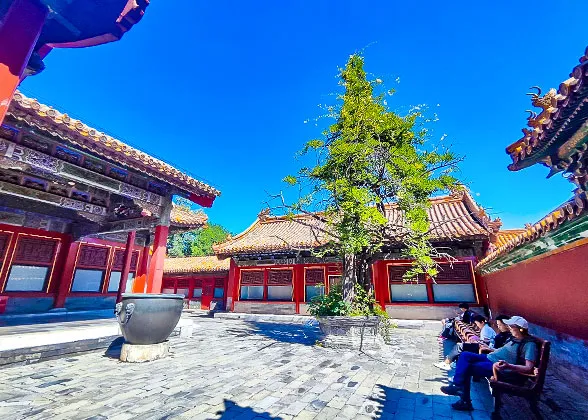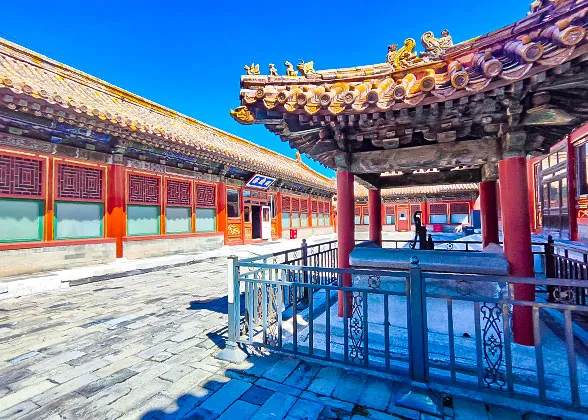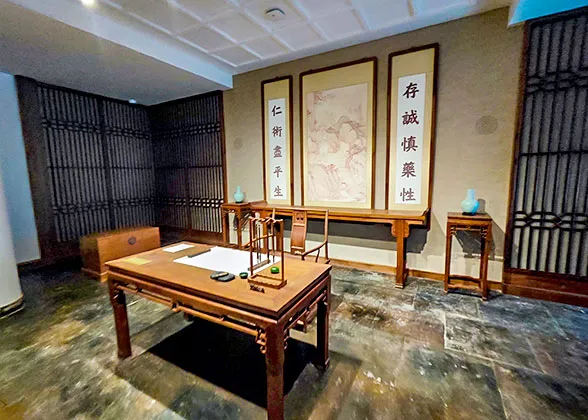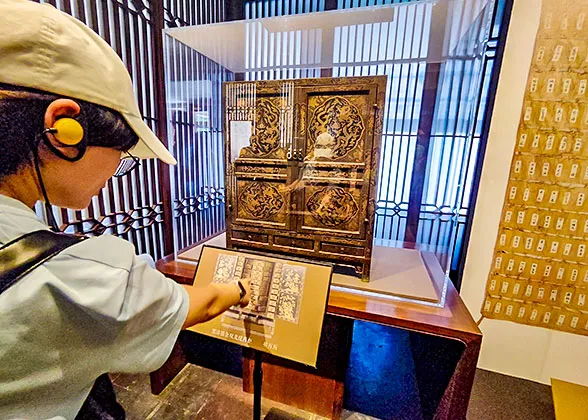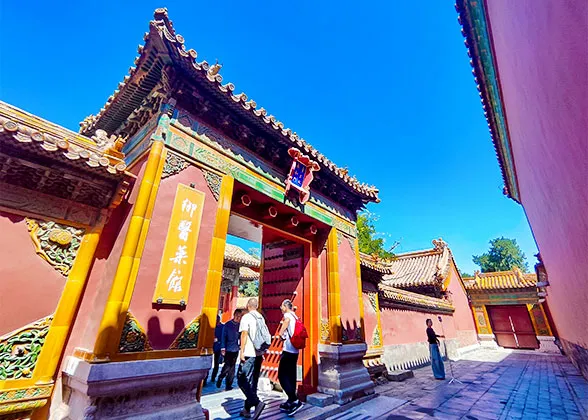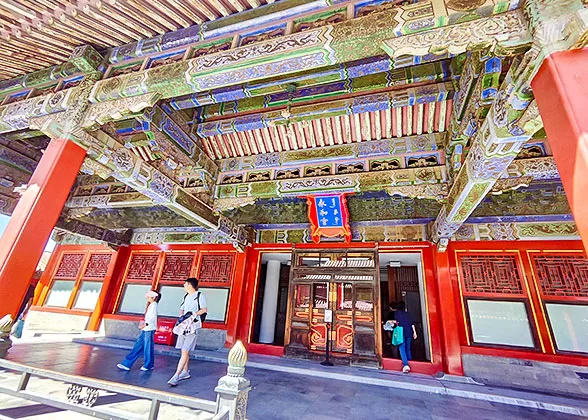Palace of Eternal Harmony (Yonghegong)
The Palace of Eternal Harmony, located between the Palace of Celestial Favor to the west and Palace of Great Brilliance to the north in the Forbidden City, had served as a home for imperial concubines from 1420 to 1911. Today, it houses an exhibition dedicated to Qing dynasty imperial medical artifacts.
|
|
What to See Today: Architecture & Medical Exhibition
Enter through the Gate of Eternal Harmony, you’ll find this complex of two south-facing courtyards. The first courtyard boasts the main structure Palace of Eternal Harmony, a five-room hall adorned with yellow glazed tiles and five mythical creatures on each eave corners. Two ancient cypress trees were planted here, adorned with wisteria, which paints them in purple and green, and gives them a new lease on life.
Moving on to the second courtyard, there is the Hall of Concord, a five-bay hall covered in yellow glazed tiles. A quaint well sits in the southwest corner.
Moving on to the second courtyard, there is the Hall of Concord, a five-bay hall covered in yellow glazed tiles. A quaint well sits in the southwest corner.
Since September 2019, the Palace of Eternal harmony has transformed into the "Imperial Medicine Museum", displaying 83 selected relics and seven replicas. These treasures offer a rare glimpse into the medical practices of the Qing Dynasty's (1644~1911) imperial court, exhibited into four key sections:
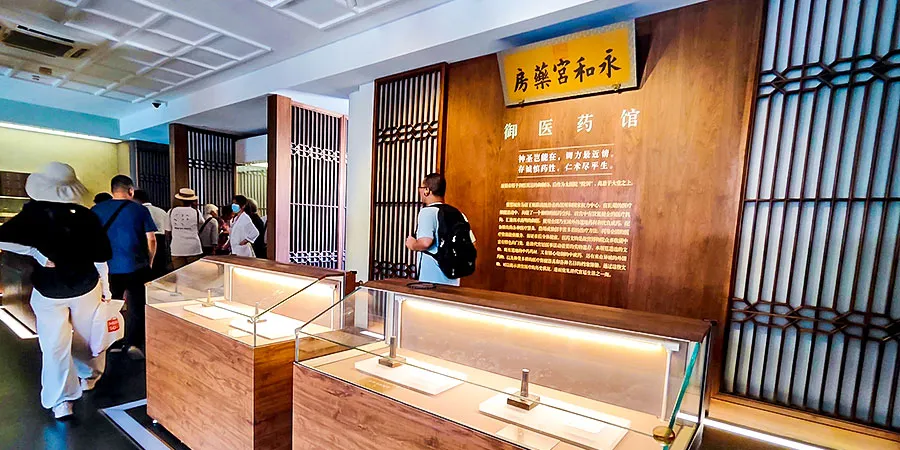 |
| Inside Imperial Medicine Museum |
Through artifact displays and immersive scene reconstructions, visitors can experience the historical atmosphere of the imperial pharmacy.
This section introduces two institutions. The Imperial Medical Academy oversaw national medical affairs, while the Pharmacy diagnosed patients across the palaces and prepared medicines for the emperor and his family.
|
|
There are diverse medicinal materials stored in the Forbidden City, including traditional Chinese medicines, foreign medicinal substances, and various medical tools.
This section showcases medical records and prescriptions, documenting the health examinations and treatments prescribed by imperial physicians for the emperor, empress, concubines, and other palace residents.
Tip: There is no additional tickets required to admire the Forbidden City Medicine Treasures Exhibition.
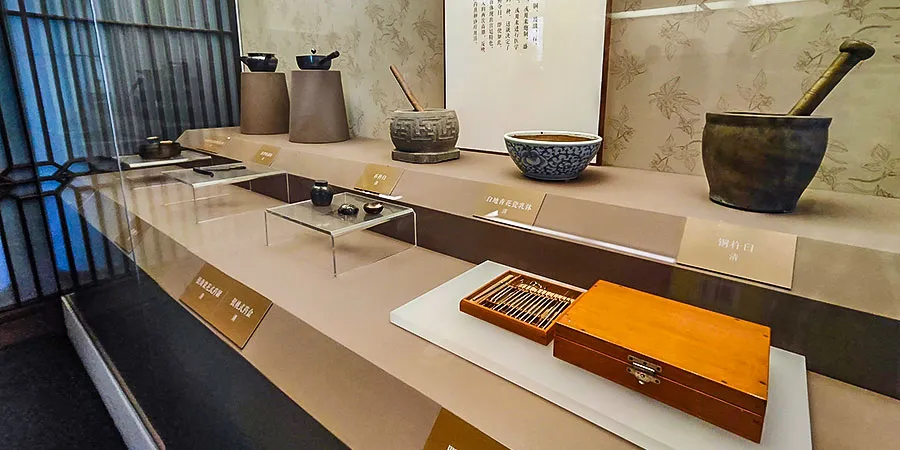 |
| Exhibited Medicinal Instruments |
Three Famous Residents in the Palace of Eternal Harmony
"Winner" of the Concubines: Empress Dowager Wuya (1660~1723)
Wuya resided in the Palace of Eternal Harmony in 1681. She was a clever concubine who skillfully won the favor of both the emperor and his mother, the most influential figures in the palace. Her modesty and respect earned her the title "Virtue", and she even entrusted her daughter to the emperor's mother to gain more approval. As a result, she was elevated to the supreme rank of Empress Dowager as her elder son Yongzheng (1678~1735) took over the throne.
Despite their familial ties, Wuya and her elder son had a strained relationship. Her elder son, raised by a higher-ranking woman due to palace rules, grew emotionally distant from her. When he ascended the throne, tensions escalated after he exiled his younger brother-a celebrated general-likely to eliminate political rivalry.
The mother's overt favoritism toward her younger son infuriated the emperor. It's said that when the Emperor refused her pleas for the younger son, she became so angry and heartbroken that she threw herself against a pillar and died shortly after.
|
|
Peaceful & Long-lived Consort Yu (1714~1792)
Consort Yu, who had been by Emperor Qianlong’s side since his prince days, gave birth to the fifth prince Yongqi (1741~1766) in the Palace of eternal harmony in 1741, which promoted her to the rank of Concubine. Four years later, she was further elevated to the rank of Consort, yet she remained uninvolved in palace intrigues, devoting herself entirely to Yongqi.
Yongqi earned his father Emperor Qianlong’s affection more than other princes, making him the most potential heir. In 1763, he saved his father from a deadly fire, which deeply moved the emperor. Sadly, Yongqi passed away at 26 from bone necrosis in 1766.
Consort Yu, deeply saddened by the loss of her son, grew distant from Qianlong. She found solace in her own life and chose to live peacefully. Remaining undisturbed by the harem's rivalry for the emperor's favor, she eventually passed away in the summer of 1792 at a grand old age of 79.
The Gourmet Consort Jin (1874~1924)
At just 14, Consort Jin entered the Forbidden City and resided in the Palace of Eternal Harmony until her demise in 1924.
As a passionate foodie, Consort Jin held her palace's culinary offerings in high regard, especially after she became the Empress Dowager in 1913. Emperor Puyi (1906~1967), in his youth, adored this palace's delicate pastries, like yellow pea cake and chestnut cake. As for many ministers, being invited by the Empress Dowager for a feast was their greatest honor.
Her love for food was boundless; she often sent servants to buy braised pork hocks from renowned restaurants out of the Forbidden City for breakfast. Because of her plump figure, the servants fondly called her "Chubby Lady". Her birthday coinciding with the Mid-Autumn Festival earned her another nickname after the festive delicacy "Mooncake".
As an imperial concubine not allowed to often meet family, in her later years, she deeply missed her family. She bought them a house with a rockery so that they could gaze at her palace with a telescope. She and her mother had a heartwarming ritual of gazing at each other at a prearranged time, a silent testament to their unbreakable bond.
See more Six Eastern Palaces
- Last updated on Oct. 23, 2025 by Jally Zhang -
